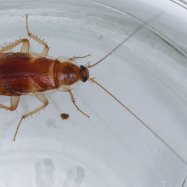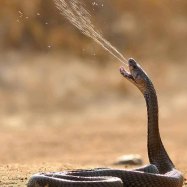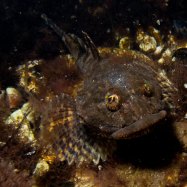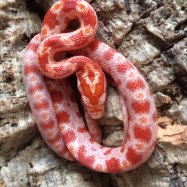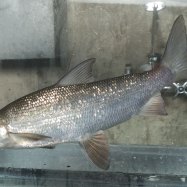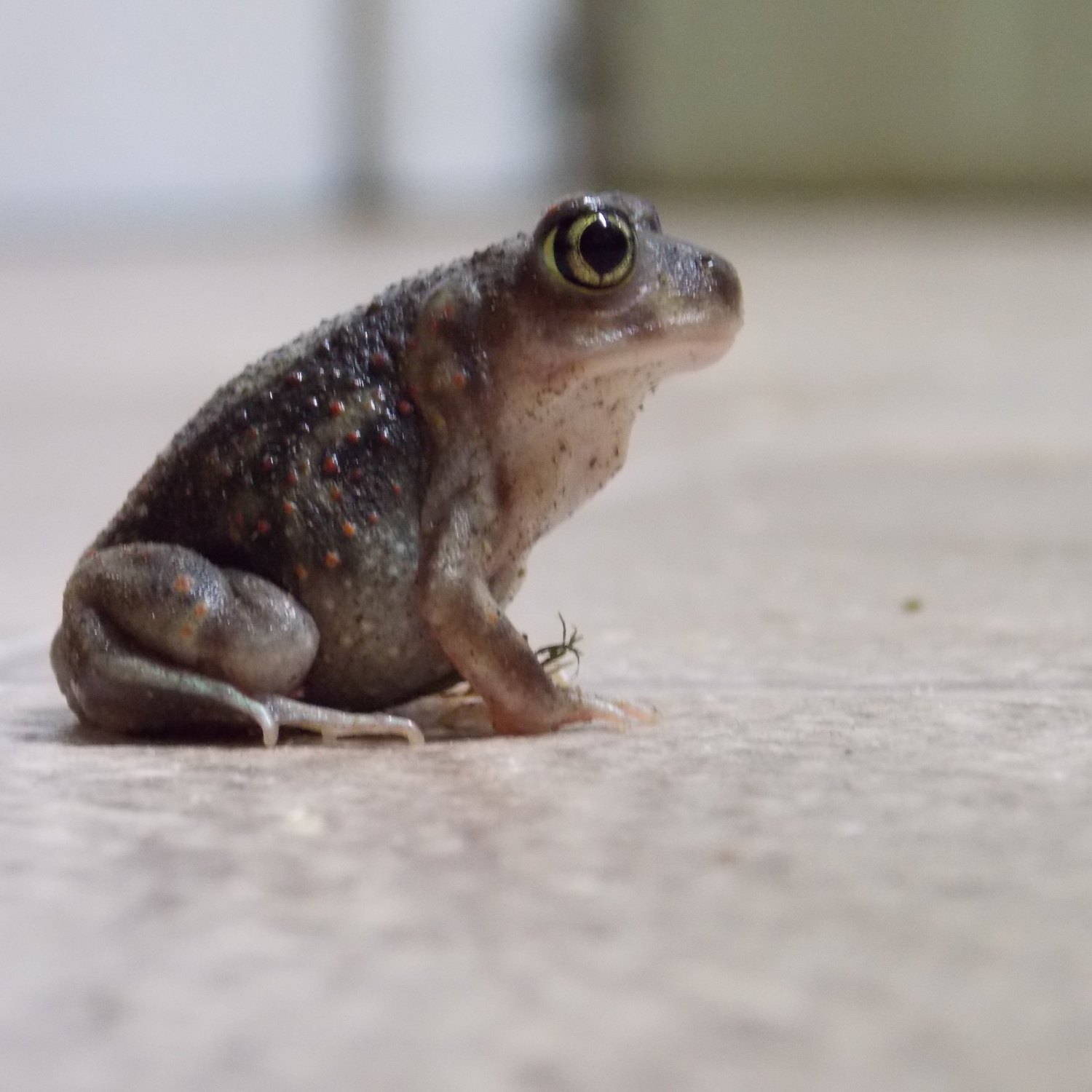
Spadefoot Toad
2 to 4 inches
The Spadefoot Toad is a small but mighty creature found in most parts of the US and Mexico. With a compact, stout body and a length of 2 to 4 inches, it belongs to the Scaphiopodidae family. These toads are expert diggers, using their specialized spade-like hind feet to burrow underground. Keep an eye out for these fascinating amphibians on your next nature walk! #SpadefootToad #amphibians #naturewalk
Animal Details Summary:
Common Name: Spadefoot Toad
Kingdom: Animalia
Habitat: Desert and semi-arid regions
The Amazing Spadefoot Toad: Surviving in the Harsh Environments of North America
The animal kingdom is full of incredible and fascinating creatures, and the Spadefoot Toad is no exception. This small amphibian may seem unassuming, but it has managed to thrive in some of the harshest environments in North America. From its unique physical features to its survival strategies, the Spadefoot Toad is a remarkable animal that deserves to be recognized and studied.Scientifically known as Spea, the Spadefoot Toad belongs to the class Amphibia, making it an amphibian Spadefoot Toad. It is also commonly referred to as the Spadefoot Toad, a name derived from the distinctive spade-shaped protrusion on its hind feet. This small but mighty creature is part of the Scaphiopodidae family and can be found in most parts of the United States and Mexico, making it a familiar sight to many.
The Habitat of the Spadefoot Toad
Unlike other amphibians that can thrive in various habitats, the Spadefoot Toad is highly specialized in its preferred environment. It is typically found in desert and semi-arid regions, where other animals struggle to survive. Its ideal habitat is usually characterized by sandy or loose soil, which allows the Spadefoot Toad to easily burrow and create its underground home.One might wonder how a small amphibian could survive in such harsh and dry environments. The secret lies in the Spadefoot Toad's unique ability to aestivate, also known as prolonged dormancy. During periods of intense heat or dryness, the toad will seal itself in its burrow and remain in a state of suspended animation until the conditions improve. This trait enables it to survive in a habitat where other animals would perish Smokybrown Cockroach.
Feeding Habits of the Spadefoot Toad
The Spadefoot Toad is a carnivorous animal, meaning it primarily feeds on other animals. It has a voracious appetite and will consume a wide range of invertebrates, such as insects, worms, and spiders. Despite its small size, the toad's mouth is equipped with sharp teeth and a large tongue, allowing it to quickly catch and consume its prey.Interestingly, the Spadefoot Toad has adapted to the scarcity of food in its habitat by developing a unique feeding strategy. Due to the unpredictability of its environment, the toad has a remarkably fast metabolism and will consume its prey at an alarming rate. It can also store fat in its body, which acts as an energy reserve during prolonged periods of dormancy.
Geographical Distribution and Country of Origin
The Spadefoot Toad is native to North America, and its range extends from southern Canada to northern Mexico. It is especially common in the United States, where it can be found in almost every state. Some of its most significant populations can be found in Arizona, California, and New Mexico.In Mexico, the Spadefoot Toad is primarily found in the northern and central regions, where the climate is drier. It can also be spotted in other parts of the country, such as Baja California, Sonora, and Coahuila. The toad's wide geographical distribution is a testament to its ability to adapt and survive in different environments.
The Physical Characteristics of the Spadefoot Toad
The Spadefoot Toad is a small amphibian, measuring between 2 to 4 inches in length. Its body is compact and stout, with a flattened appearance, making it ideal for burrowing. It also boasts a broad and flat head, which houses its large eyes and mouth.One of the most striking features of the Spadefoot Toad is the spade-shaped protrusion on its hind feet. This specialized feature is used for digging burrows and is crucial for the toad's survival. Its skin is typically dry and rough, with a barred pattern that provides camouflage in its environment. The toad's coloration can vary, but it is generally brown, gray, or green, allowing it to blend in with its surroundings.
Threats to the Spadefoot Toad
Despite its remarkable ability to survive in harsh environments, the Spadefoot Toad is facing multiple threats that put its population at risk. One of the most significant threats is habitat destruction, as human development continues to encroach on its habitat. This has resulted in the loss of suitable burrowing sites, making it more difficult for the toad to survive.Another critical threat to the Spadefoot Toad is pollution, especially from pesticides and fertilizers used in agriculture. This has a direct impact on the toad's food sources, causing a decline in its population. Climate change is also a significant concern, as it can alter the toad's habitat and make it even more challenging for it to aestivate.
In Conclusion
The Spadefoot Toad may be small, but it is a fascinating and resilient animal that has managed to thrive in some of the harshest environments in North America. Its unique physical features and survival strategies make it a subject of interest for researchers and nature lovers alike. However, as with many other animals, the Spadefoot Toad is facing threats to its existence, and it is our responsibility to ensure its survival for future generations. With proper conservation efforts, we can continue to admire and appreciate this incredible creature for years to come.

Spadefoot Toad
Animal Details Spadefoot Toad - Scientific Name: Spea
- Category: Animals S
- Scientific Name: Spea
- Common Name: Spadefoot Toad
- Kingdom: Animalia
- Phylum: Chordata
- Class: Amphibia
- Order: Anura
- Family: Scaphiopodidae
- Habitat: Desert and semi-arid regions
- Feeding Method: Carnivorous
- Geographical Distribution: North America
- Country of Origin: United States and Mexico
- Location: Most parts of the United States and Mexico
- Animal Coloration: Variable, often brown, gray, or green
- Body Shape: Compact and stout
- Length: 2 to 4 inches
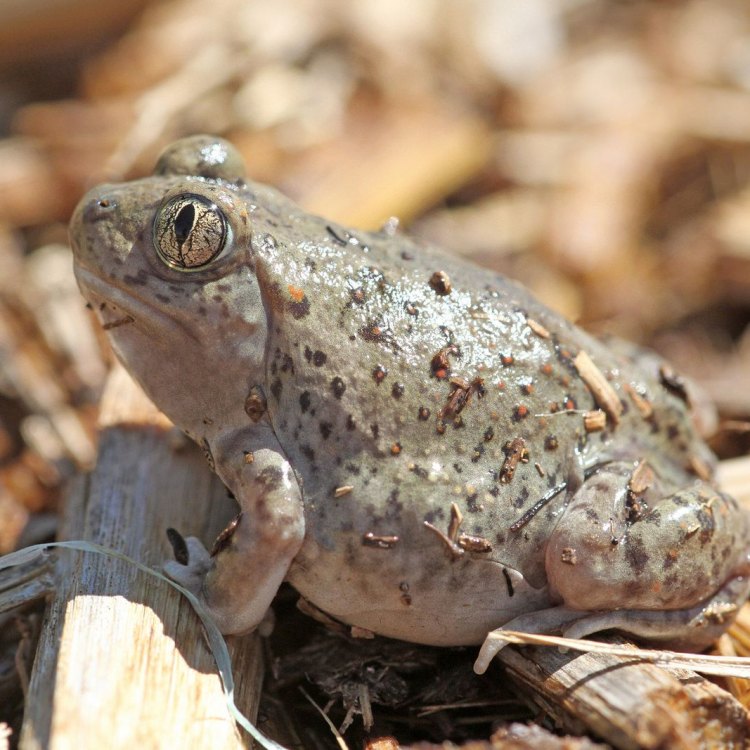
Spadefoot Toad
- Adult Size: Small to medium-sized
- Average Lifespan: 5 to 15 years
- Reproduction: Sexual
- Reproductive Behavior: Males call to attract females
- Sound or Call: Loud, nasal call
- Migration Pattern: Some species exhibit migration to breeding sites
- Social Groups: Solitary
- Behavior: Nocturnal and burrowing
- Threats: Habitat loss, pollution, and disease
- Conservation Status: Varies by species
- Impact on Ecosystem: Control insect populations
- Human Use: None
- Distinctive Features: Vertical pupils, spade-like protrusion on hind feet
- Interesting Facts: Some species can burrow into the ground in seconds
- Predator: Snakes, birds, mammals
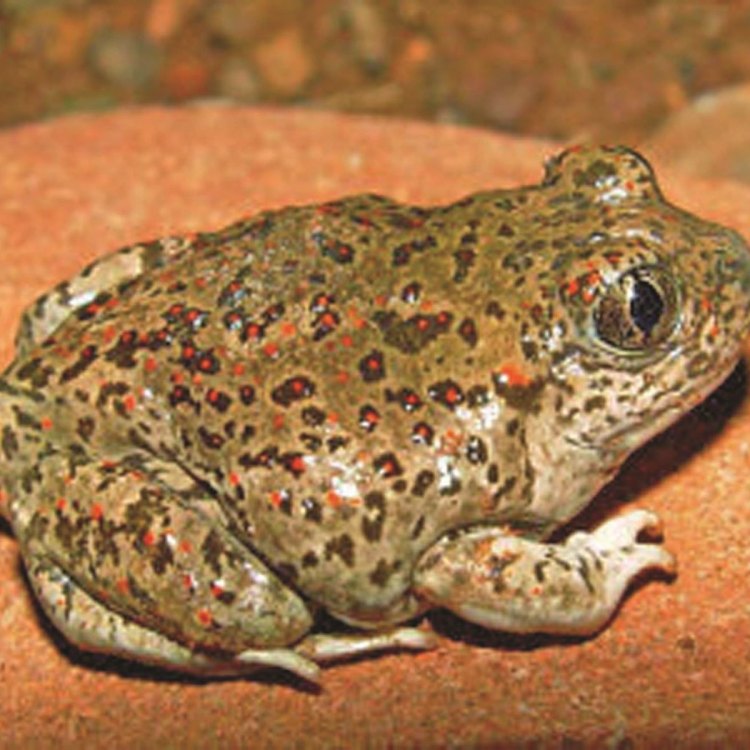
Spea
The Fascinating World of Spadefoot Toads: Survivors of the Night
The world is full of mysterious creatures, some big and some small. In the vast array of animal species, one might easily overlook the humble spadefoot toad. Despite its unassuming appearance, the spadefoot toad is a fascinating creature with unique features and behaviors that make it stand out in the animal kingdom.From its small to medium size and nocturnal behavior to its distinctive features and interesting reproductive habits, here is a closer look at the world of spadefoot toads and their role in the ecosystem PeaceOfAnimals.Com.
The Basics: Size, Lifespan, and Reproductive Behavior
The spadefoot toad is a small to medium-sized amphibian, with adult sizes ranging from 2 to 3 inches in length. They can be found in North and South America, Europe, and Asia, with around 25 different species identified.These toads have an average lifespan of 5 to 15 years, depending on the species and environmental factors. During their lifetimes, they go through a unique sexual reproductive behavior, where the males call out to attract females for mating.
Reproduction and Sound: A Nocturnal Symphony
The spadefoot toad's reproductive behavior is a sight to behold. The males use their vocal cords to produce a loud, nasal call to attract females. This call can be heard from quite a distance, thanks to its unique structure that amplifies the sound.Interestingly, different species have different calls, making it possible for females to differentiate between the calls of potential mates. The male's call is also essential in establishing a territory and fending off other males, making it a crucial part of their reproductive behavior Southeastern Blueberry Bee.
Migration and Social Groups
Some species of spadefoot toads exhibit a fascinating behavior of migrating to breeding sites during the breeding season. This migration is triggered by environmental cues such as rainfall or temperature changes. It is a critical part of their reproductive cycle, as it allows them to find suitable mates and habitats for their offspring.Unlike other toad species, spadefoot toads are solitary creatures and do not form social groups. They only come together during the breeding season and are otherwise found alone in their burrows.
The Nocturnal Life of Spadefoot Toads
Spadefoot toads are primarily nocturnal creatures, meaning they are active at night and sleep during the day. This is a survival strategy that helps them avoid predators and stay cool in the hot, arid environments they inhabit.These toads are also expert burrowers, using their specialized spade-like protrusion on their hind feet to dig into the ground. They create burrows where they can hide during the day and hibernate during colder months. They can burrow into the ground in seconds, thanks to their powerful digging abilities.
Threats to Spadefoot Toads and Conservation Status
Unfortunately, spadefoot toads are facing several threats that are putting their populations in danger. Habitat loss due to urbanization and agriculture, pollution, and diseases are some of the main threats to these creatures.The conservation status of the spadefoot toad varies by species, with some classified as critically endangered, while others are considered of least concern. Conservation efforts are crucial for the survival of these fascinating creatures, especially for those at risk of extinction.
The Impact of Spadefoot Toads in Ecosystems
Despite their small size, spadefoot toads play a crucial role in their ecosystems. They are insectivores and consume a wide variety of insects, including beetles, ants, termites, and flies. This helps to control insect populations, preventing pest outbreaks and maintaining balance in the environment.Spadefoot toads are also prey for other animals such as snakes, birds, and mammals. This makes them an essential part of the food chain, providing a source of food for predators.
Human Use and Unique Features
Unlike many other animals, the spadefoot toad has no known human use. They are not kept as pets or used for any commercial purposes. However, their distinctive features make them a fascinating subject for scientific study and observation.One of the most unique features of spadefoot toads is their vertical pupils, which help them see well in low light conditions and at night. These toads also possess a spade-like protrusion on their hind feet, which they use for digging and burrowing.
Interesting Facts about Spadefoot Toads
As if their unique features and behaviors were not intriguing enough, here are some interesting facts about spadefoot toads that will make you appreciate these creatures even more:- Some species of spadefoot toads can lay up to 60,000 eggs at a time.
- The spade-like protrusion on their hind feet is made up of keratin, the same material that makes up human nails.
- Some species of spadefoot toads can survive for months without water, thanks to their ability to absorb moisture through their skin.
- Certain types of bacteria living on spadefoot toads' skin can protect them from harmful pathogens.
- The spade-like protrusions on their hind feet are lost and re-grown every year during the hibernation period.
The Resilience of the Spadefoot Toad
In a world where many species are facing threats of extinction, the spadefoot toad has managed to survive and adapt. It is a testament to their resilience and fascinating survival strategies, such as their ability to burrow and aestivate (a form of dormancy) during harsh conditions.However, these creatures are not invincible, and it is crucial for us to understand and protect them to ensure their survival. From conserving their habitats to reducing pollution and preserving their breeding sites, there is much we can do to help these amazing creatures thrive.
In conclusion, the small and unassuming spadefoot toad is a treasure trove of unique features and behaviors that make it a fascinating creature to study and admire. As we continue to learn more about these creatures, let us also do our part in preserving their habitats and protecting their populations so that they may continue to survive and thrive in our ecosystems for many years to come.
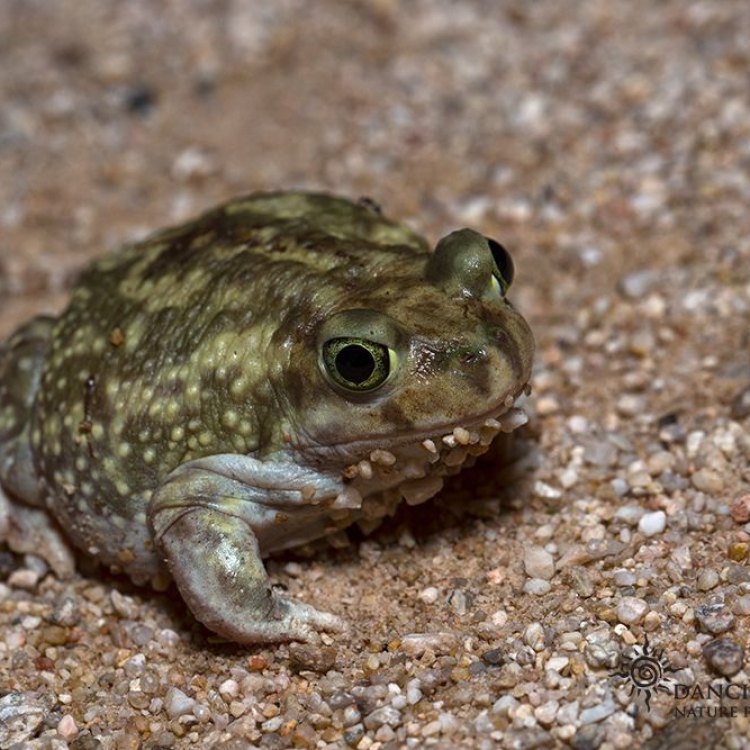
The Amazing Spadefoot Toad: Surviving in the Harsh Environments of North America
Disclaimer: The content provided is for informational purposes only. We cannot guarantee the accuracy of the information on this page 100%. All information provided here may change without prior notice.




